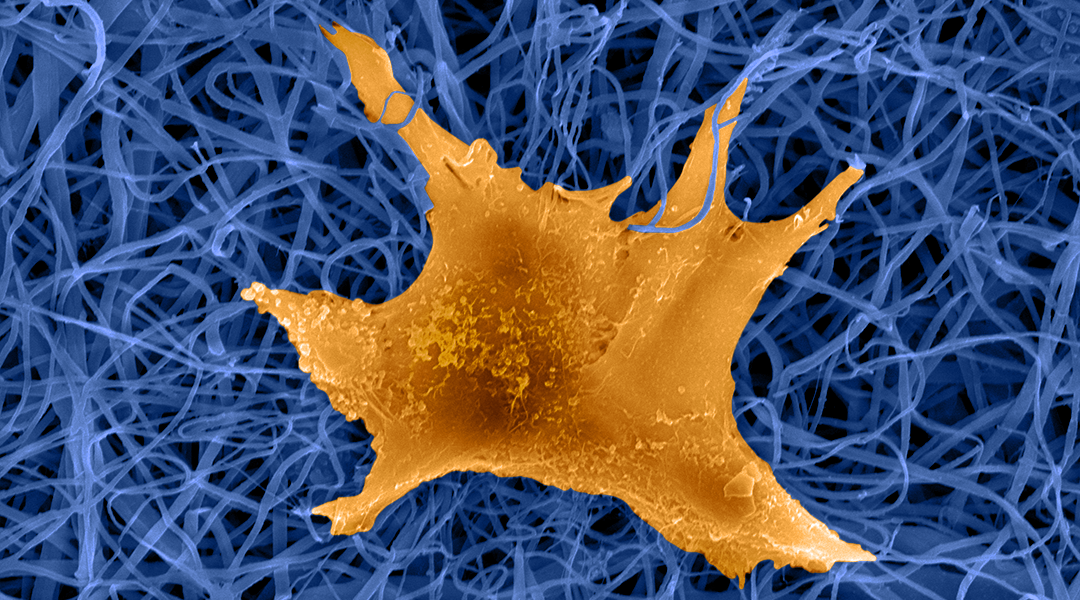Electrospinning is an emerging fabrication technology that has attracted a lot of attention in recent years in fields ranging from medicine and tissue engineering to energy and environmental science due to the ease of producing well-defined, fibrous woven or non-woven materials. The process begins when a polymer solution or melt is exposed to a high electric field that causes it to deform and spin, and manipulates it to very fine meshes of micro/nanostructured fibers.
The constant advancement and unfolding of such material, along with the beneficial features of nanoscale structures, have made them eligible candidates of interest for the progress and development of an array of therapies.
Researchers from the University of Edinburgh and the Swiss Federal Laboratories for Materials Science and Technology (Empa) explore the possibilities that electrospinning holds for skin tissue engineering in a recent review published in WIREs Nanomedicine and Nanotechnology.
When a wound occurs, a dynamic series of highly coordinated physiochemical events promote repair and reinstate its functionalities. If the injury or burn is excessive or the patient suffers from a chronic (non-healing, persistent) wound due to e.g., underlying type II diabetes, managing and controlling the outcome of the damaged area remains a challenge for clinicians today. Electrospun nanostructured filaments can inspire the development of a healthy extracellular matrix, where manipulation of their properties can aid the wound healing process and trigger a more prompt recovery.
Researchers around the globe are working tirelessly to bring forward discoveries derived from this fabrication technology. Not only can electrospinning help burn patients, but it can also facilitate drug delivery and skin cancer related on-site treatment. The current and forthcoming developments centering around manipulating the unique properties of these nanoscaled filaments will facilitate an optimized performance, and will offer answers to important issues faced by clinicians in wound management.
Antonios Keirouz, lead author of this study, indicated that: “The constant evolvement and rapid advancements of this field will propel the already present innovative ideas towards fast-track clinical translation, giving rise to nanostructured products that can directly have a positive impact to the patients’ outcomes.”
Michael Chung, who investigated the progress of the electrospinning technology in the development of three-dimensional polymeric scaffolds, added: “Novel techniques are continuously emerging and advancing to establish greater geometrical control over 3D nanofibrous scaffold assembly. 3D materials made by electrospinning are not only constantly improving in their skin-mimicking capabilities but also fabrication is becoming more cost- and time-effective.”
In an ongoing clinical trial running on spray painting fibers directly onto the wound, using a hand-held device — which can reduce pain and peel off after the area is healed — to advanced drug delivery bandages that can modulate and adapt the release of substances on-site, the advancements of recent fabrication approaches of three-dimensional nanofiber-based materials will lead the future of modeling skin-material interactions.
Dr. Norbert Radacsi, Assistant Professor and manager of the NanoMaterials Laboratory of the School of Engineering at the University of Edinburgh, said: “Portable, hand-held electrospinning devices and the combination of electrospinning with 3D printing are important milestones for skin tissue engineering as these new techniques enable the clinical applications of electrospinning technology for patient care.”
His collaborator, Dr. Giuseppino Fortunato project leader and senior scientist at the Laboratory for Biomimetic Membranes and Textiles at Empa, who has spent a vast part of his research career investigating and improving the applications of electrospun nanofibrous materials, added,”There is still space for technological improvements of the electrospinning procedures with respect to skin tissue engineering, e.g., to allow for improved cell adhesion, to improve the rate of neovascularization or for scaffold materials to resist wound contraction and fibrosis.”
This rapid and constant progress of the electrospinning field, making the production of such nanomaterials all the more pragmatic while considering the affordability of this process, will have a real positive effect and play critical roles in the future of wound management.
Written by: Antonios Keirouz, Michael Chung, Jaehoon Kwon, Giuseppino Fortunato, Norbert Radacsi
Reference: A. Keirouz, et al. ‘2D and 3D electrospinning technologies for the fabrication of nanofibrous scaffolds for skin tissue engineering: a review‘, WIREs Nanomedicine & Nanobiotechnology (2020). DOI: 10.1002/wnan.1626

















